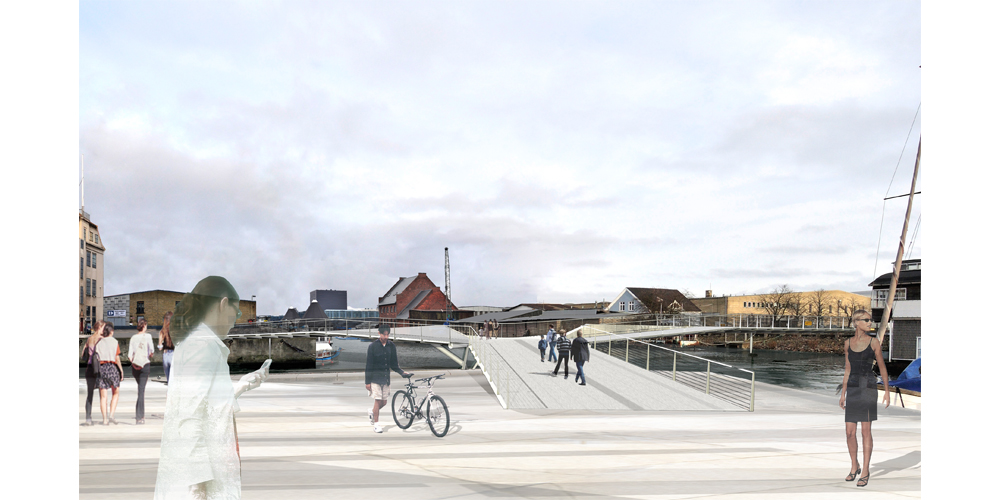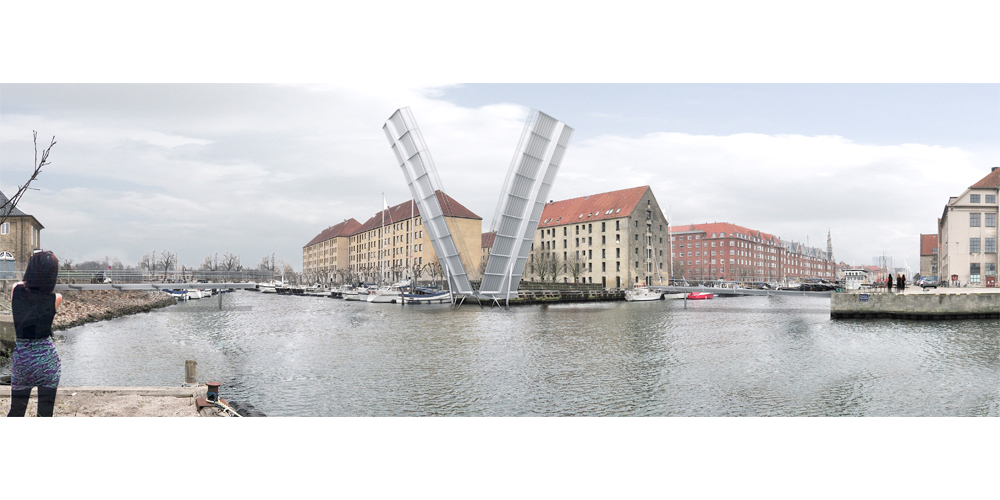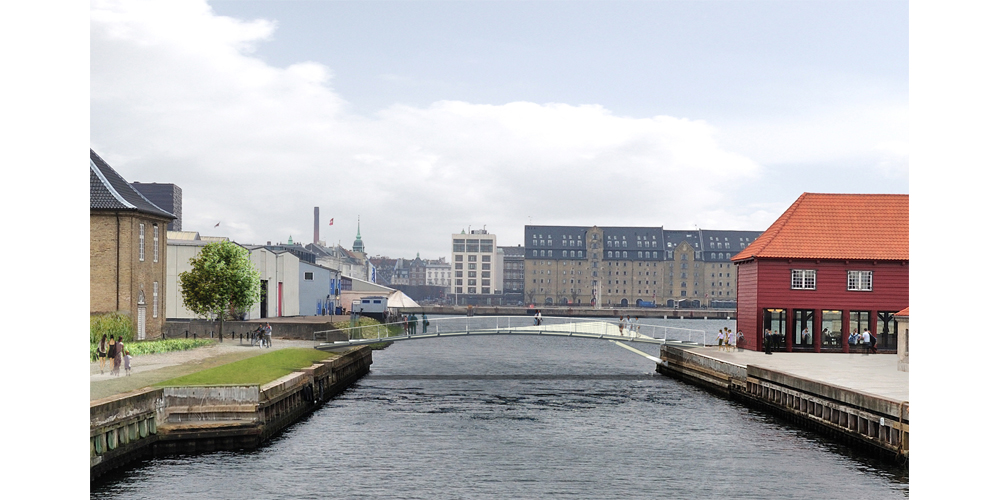Jury report
Conclusion
The lightness of the bridge design seems very well founded in the urban context, with its apparent connection with the simplicity we would normally associate with landing stages in harbours. This is an attractive starting point, and the ensuing solutions provide adaptable forms that point towards a total contextual picture. This architectural approach, which is applied to all scales and elements illustrated in the entry (abutments, bridge decks and ‘pylons’), has found an exemplary natural expression in a minimalist functionality. The idiom is so small in scale that there is no hint of monumentality whatsoever, in complete contrast to the urban landscape, but in this way it adapts itself in the best possible way to the contextual whole. This is a starting point which all members of the jury found extremely inspiring, one that could be adapted to the urban canal spaces in a highly compelling way. However, the illustrated design of the bridge across Inderhavnen is less compelling. Both appearance and structure seem quite fragile, and as a result the bridge seems a less than convincing addition to its surroundings.
Thus the jury members agree to select this entry as a shared winner of the part competition for the design of the link across Christianshavns Kanal and Trangraven and the bridge across Proviantmagasingraven.
Context
In terms of urban planning, this entry is based on the perception of the bridge as a pier primarily surrounded by water. With this in mind, the entrant has designed some extremely minimalist bridges that
form a strong contrast to the monumentality of the city. The entrant describes the urban experience generated in and around the harbour as a movement close to the water, the harbour being a space surrounded by walls, whose varied course follows the diverse expressions of the city. The entrant emphasises the importance of ensuring that the bridge design will add to and enhance the daily
experience of the relationship between the harbour space and the surrounding buildings.
Against this background, the bridge is designed with a view to achieving optimal transparency. The entrant seeks to separate the bridge trajectories so as to achieve segregation of pedestrians and cyclists, which is conducive to the wish for transparency of structures.
The entrant describes the structural starting point in the contextual setting as one similar to that of an insect and its movements on the water’s surface. The minimalist expression is characteristic of the
entire trajectory across the inner harbour to the canals to the east.
The simple form of the bridges, their easily understandable structural configuration and their easily readable functionality, both when they are open and when they are closed, are intended to facilitate
their adaptation to the context in the broadest possible way. The light railings feature a wooden handrail with incorporated lighting.
Bridge across Inderhavnen
The proposed design is a composition of two ribbons that form areas for pedestrians and cyclists respectively. The ribbon for cyclists is orientated towards the north as a continuation of the movement
starting in Nyhavn. The structural configuration around the primary piers and the composition of cable stays define a neutral area along the length of the bridge between the two linear trajectories. This intensifies the intended perception of transparency and the bridge deck as weightless. It will be possible to establish sites for short stops or breaks in the same area.
Technical design
The bridge consists of two separated steel decks held together at the middle of the bridge by transverse ribs. The bridge has two bascule leaves, each supported by open lattice structures which ensure that the loads of the leaves are transmitted to the two bascule-supporting piers. In addition to resting on these two bascule-supporting piers, the bridge rests on six V-shaped columns and two separate abutments behind each of the quay edges.
The structural design is well illustrated in the entry, but the bridge’s resistance to collision and ice loads is not described, nor are matters relating to oscillation and vibrations, although for the latter a description is very important, as oscillation and vibration dampers would most likely be necessary. It would be difficult to meet these requirements with the delicate geometry proposed.
There is no illustration of the bouyage required, and underground engine rooms are proposed in both quay areas, which would complicate operation and maintenance. Furthermore, hydraulic oil would
have to be conveyed over quite a distance. The proposed railings could probably be designed to handle the relevant loads, but the entrant provides no illustration of this.
The traffic solutions illustrated are good and, because of the separated steel decks, there would be few possible conflicts between cyclists and pedestrians.
Construction costs
The jury finds it likely that realisation of this project would be feasible within the budgetary framework.
Fee
In accordance with the competition regulations, the bid was given a
score of 10.
Calculation has been done by WTM Engineers, Hambourg



